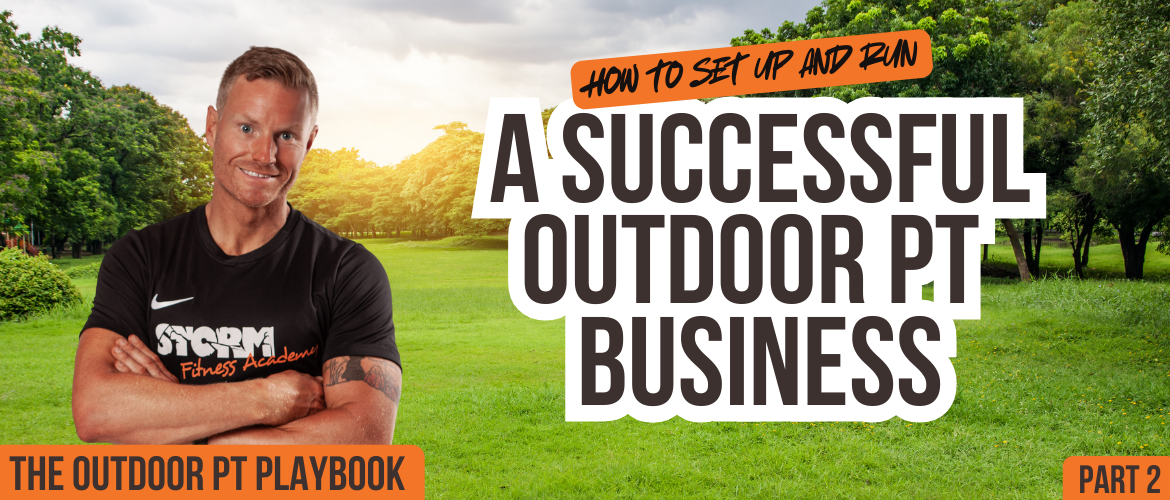GET IN TOUCH TODAY!
"*" indicates required fields

Before you run a single bootcamp in the park—read this first. These are the essentials every outdoor PT needs to know to grow a business that’s professional, profitable, and legally sound.
This is Episode 2 of our 3-part blog series: The Outdoor PT Playbook. If you missed Episode 1, check it out here: How to Coach Outdoors with Minimal Kit (And Still Get Amazing Results)
It’s packed with practical programming ideas and coaching strategies for training outside with just bands, kettlebells, and a whole lot of creativity.
Running personal training sessions outdoors can give you more freedom, variety, and impact—but without the right systems in place, it can also become chaotic. This guide walks you through everything you need to know to set up your outdoor PT business properly, from permits to programming.
Yes.
If you’re training clients in public spaces like parks, beaches, or woodland areas, you need to:
✅ Have public liability insurance that covers outdoor training
✅ Check with your local authority or council—many require a permit or booking for commercial use of public land
✅ Respect local by-laws and consider park users—especially in busy or shared spaces
Pro Tip: Keep a printed or digital copy of your insurance and permit with you in case you’re ever challenged.
You need a space that is:
Where to look:
Local parks or recreation grounds
School fields (with permission)
Beaches or green belt land (if allowed)
Private land or gardens (great for premium 1:1s)
Tip: Consider offering to partner with local councils, schools, or businesses to secure regular access in return for a small fee or community value.
1:1 Training
Easier to manage logistically
Personalised experience = higher price point
Great for rehab, strength coaching, or bespoke programming
Group Sessions (Bootcamps, Circuits, etc.)
Lower price per person, higher volume = more scalable
Social proof + energy = higher retention
Needs structure and systems for managing multiple clients safely
Key Considerations:
Keep a sign-in/register system
Provide clear instructions for all levels
Use scalable formats like circuits, AMRAPs, team challenges
Don’t wing it—treat it like a real business. Here’s what you need behind the scenes:
Tip: Keep everything mobile-ready and accessible on your phone or tablet when coaching in the field.
Without gym mirrors, machines, or rigs—your coaching has to be sharp.
Bonus: The natural environment demands better body awareness, which actually helps improve movement quality over time.
Bad weather doesn’t mean bad business—if you prepare properly.
Three options:
Provide rainproof shelter (like a pop-up gazebo for kit or stretching)
Have an indoor alternative (hall, garage gym, local studio)
Move sessions online via Zoom—especially for mobility or strength sessions
Set client expectations upfront with a clear cancellation policy, and make sure sessions are safe even if damp or cold.
Tip: Branded waterproofs, cones, and kettlebells look pro—and show you’re ready to coach in all seasons.
Outdoor PT is still premium coaching—don’t undervalue it just because it’s not in a gym.
Pricing Tips:
Consider block bookings with discounts to improve retention
Charge more for 1:1 customisation and less for group formats
Include value-adds like progress tracking, weekly check-ins, or nutritional guidance
Packaging Examples:
6-week fat loss bootcamp
“Train with Nature” PT package (1:1 coaching + outdoor home workouts)
Corporate outdoor fitness for local businesses
Your brand should reflect your outdoor USP. Show people that you’re not just a PT—you’re a coach who leverages the power of the outdoors to help clients transform.
Content ideas:
Time-lapse clips of your sessions setting up
Reels showing your favourite outdoor exercises
Client testimonials post-session
Instagram Stories when you’re setting up in the rain = credibility builder
Messaging tips:
“Stronger. Fitter. Outside.”
“Train hard, breathe deep.”
“Escape the gym. Transform in nature.”
Highlight benefits like:
No gym membership needed
Fresh air + functional training
Community vibe in group sessions
Running a successful outdoor PT business is about more than showing up with a kettlebell and stopwatch.
You need systems, safety, and structure. But once you’ve got those foundations in place, you’ll have the freedom to coach how you want—while delivering unforgettable experiences that keep clients coming back.
Want to level up your coaching and grow your outdoor fitness business?
Check out our Level 3 Personal Trainer Course or Level 4 Strength & Conditioning Qualification at Storm Fitness Academy.
And don’t forget to subscribe to the Storm Fitness Academy Podcast for more practical tips to grow your fitness career.
"*" indicates required fields